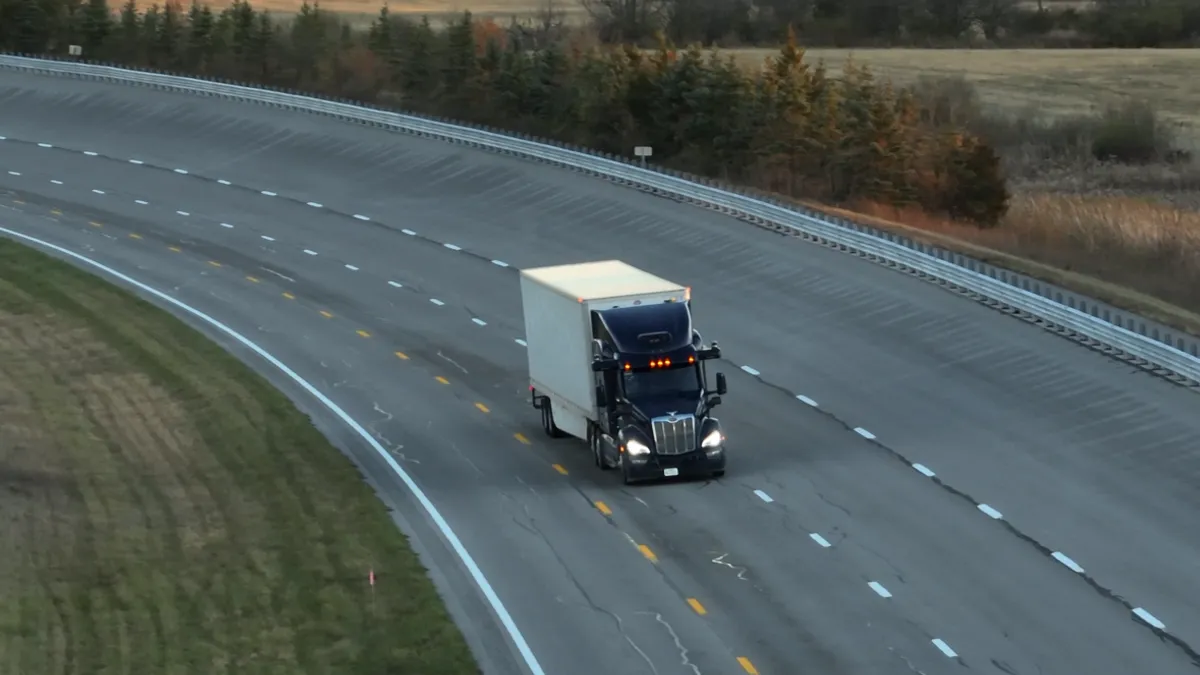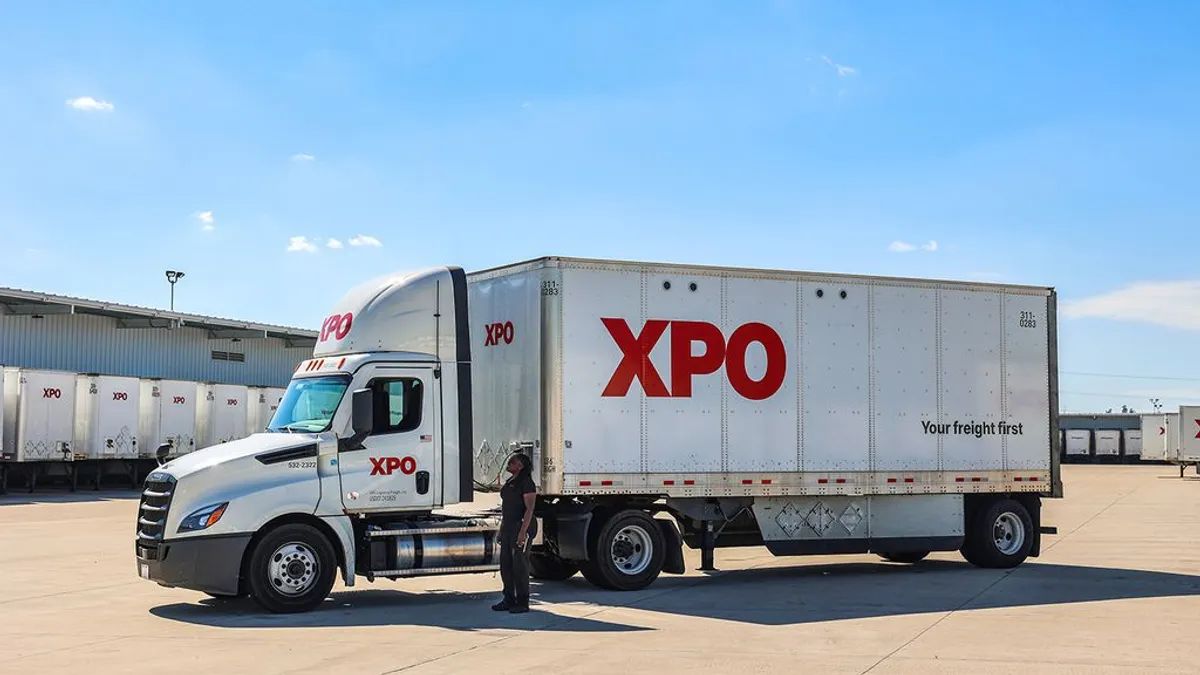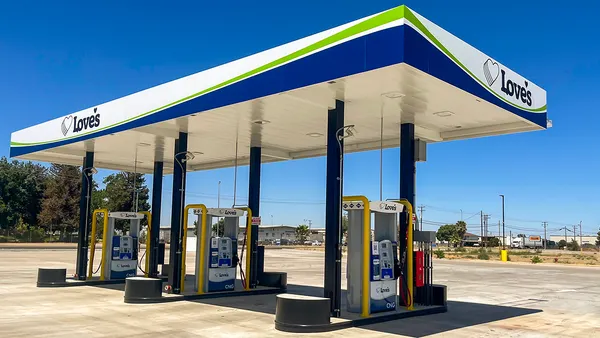Aurora Innovation is testing its autonomous technology without drivers at high speeds at the Transportation Research Center’s 7.5-mile track in Ohio, the company said in an email.
The trucks take about 10 to 15 minutes to complete a lap on the track, an Aurora spokesperson said. The company began testing the trucks at highway speeds at the research center in the second half of last year.
“It was impressive to watch it go 75 miles an hour with nobody on it,” Aurora Senior Safety Specialist Bryan Jones said at the Mid-America Trucking Show last month. On public highways, the autonomous trucks are governed at 65 mph, Jones said, and have vehicle operators in the cab.
Aurora uses test tracks and safety principles to verify the autonomous system is working properly, the company has noted. Advocates say autonomous vehicles can reduce crashes, even if other drivers act unpredictably.
“Equipped with advanced sensors and 360-degree views and programmed as model drivers, AVs do not drive drowsy, distracted, impaired or recklessly,” the Autonomous Vehicle Industry Association said in its inaugural annual report.
Aurora partners such as Schneider National, Hirschbach Motor Lines and FedEx are testing the AV tech on public roads in Texas. The tech-equipped trucks logged over 820,000 commercial miles last year, per an earnings presentation.
Video clips showed a driverless Aurora tractor-trailer traveling on the track and passing a vehicle stopped in another lane. In other shots, the truck travels alone and behind a passenger vehicle.
Testing shows ability to prevent dangerous situations
Other company videos from a test facility in Pittsburgh have demonstrated Aurora’s trucks responding to a sport-utility vehicle aggressively changing lanes and a pedestrian dummy moving into their path. Even when passenger vehicles limit the Aurora truck’s ability to safely diffuse a situation, the tractor-trailer can come to a safe stop.
“We’ve worked closely with public safety officials to help ensure our autonomous trucks can respond appropriately when they encounter emergency vehicles on the road,” Nat Beuse, Aurora's chief safety officer, said in a company blog post last month. “This has included coordination with multiple public safety agencies across the country, including in Texas where we plan to launch our driverless trucking product.”
Aurora’s test fleet also operates in the Bay Area, according to an annual report.
The company aims to switch freight delivery testing with vehicle operators onboard to fully autonomous operations between Dallas and Houston by the end of this year.
For next year, Aurora has identified adding a lane in Texas from Fort Worth to El Paso, as well as a route involving Phoenix or Atlanta, according to an earnings presentation. That would also coincide with the company’s timeline for having the trucks operate not just at optimal conditions but also under rain and heavy wind.
Simulations help scale testing
The private track tests are just one part of a process. Marc Verdugo, who oversees Aurora’s test operations, said in a statement to Trucking Dive that the company develops the technology in simulation and on test tracks before deploying new capabilities on public roads.
“This includes validating our autonomous trucks’ ability to navigate the complex situations we expect them to encounter in the real world, including handling law enforcement interactions, collision avoidance, tire blowouts, construction zones, lane closures, reckless drivers, and on-road debris,” he said.
The company’s virtual testing can simulate over 50,000 trucks on the road in one hour, according to an investor presentation. That helps increase the speed in which the company can bring the technology to the market.
“We’ve continued to use simulation, track testing, and commercial operations to learn and improve our product in advance of commercial launch,” Verdugo said. He noted the company’s approach to development includes defining and building product capabilities, refining and piloting those features and validating the technology to meet its safety case.
Editor's note: An earlier caption included an incorrect timeline, which was corrected. The updated story also clarified comments about public highway speeds.













